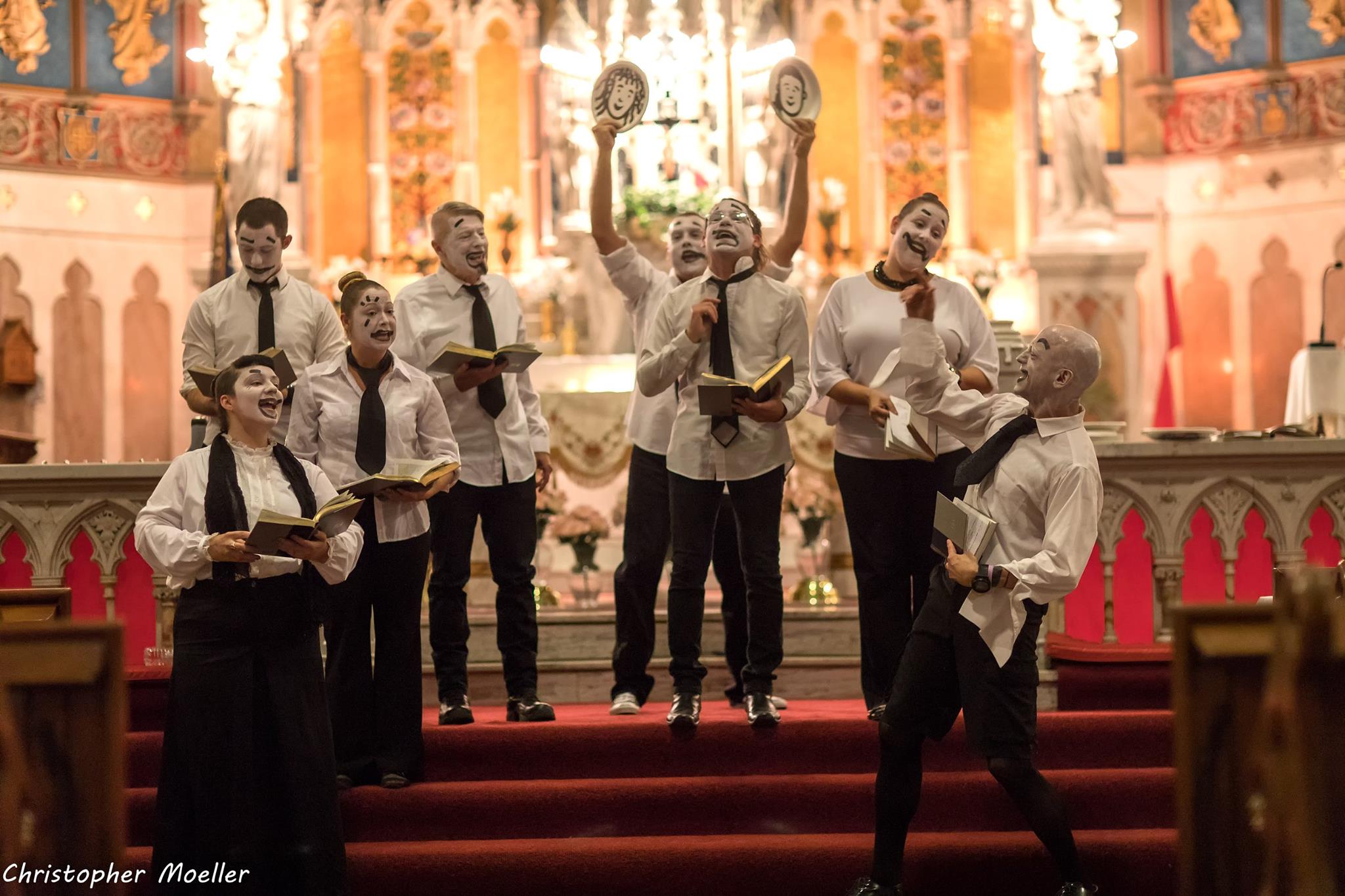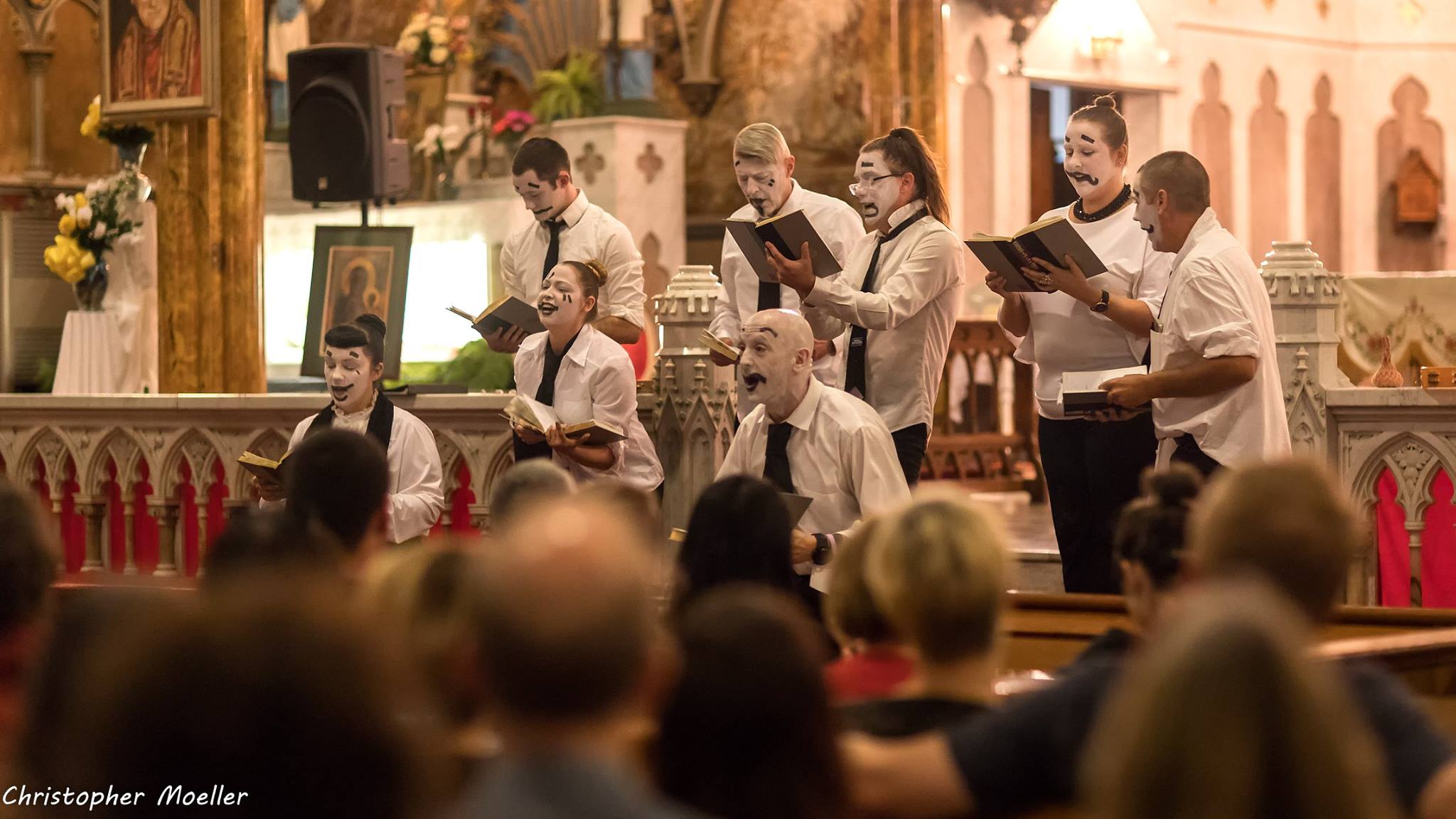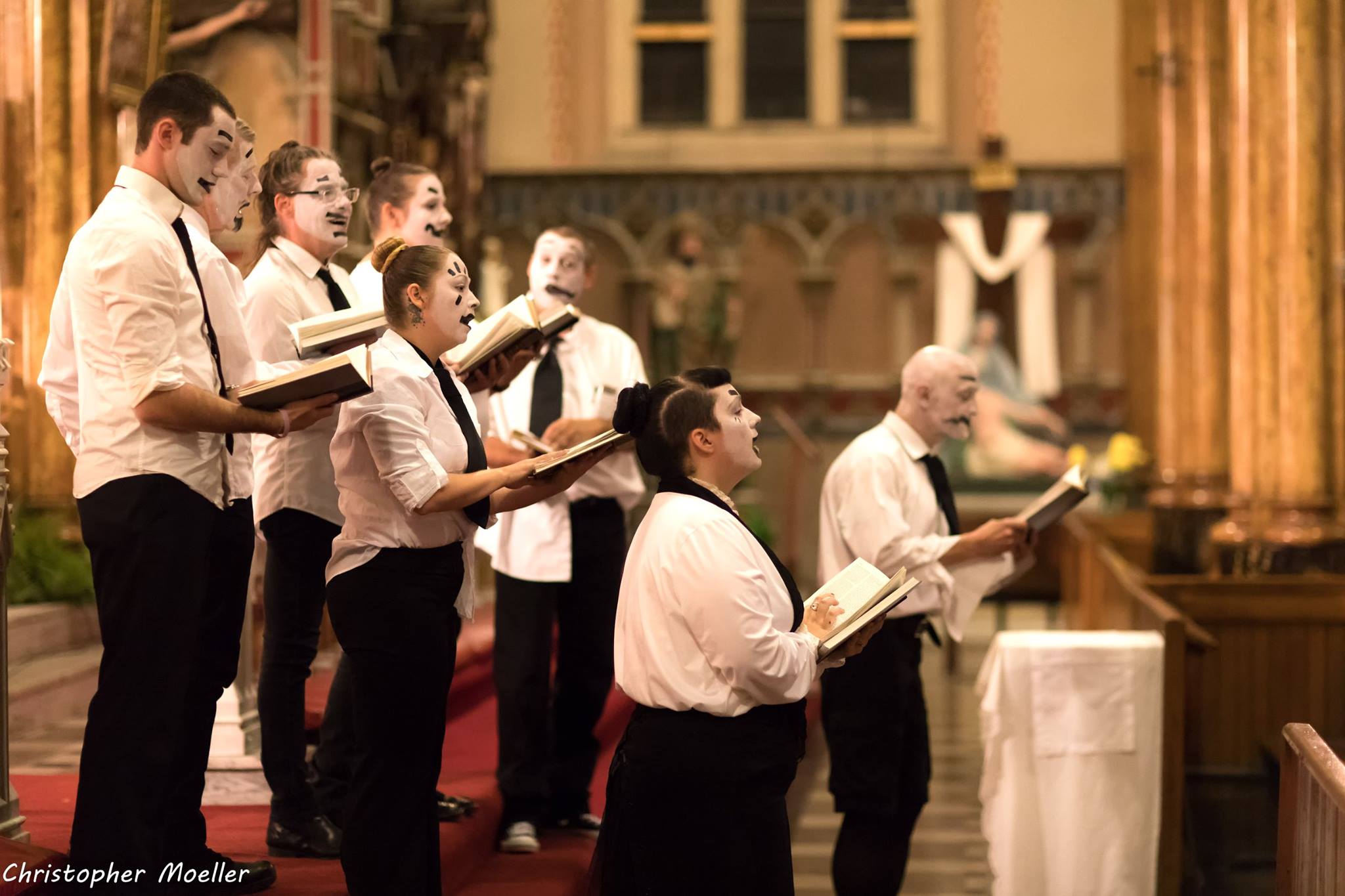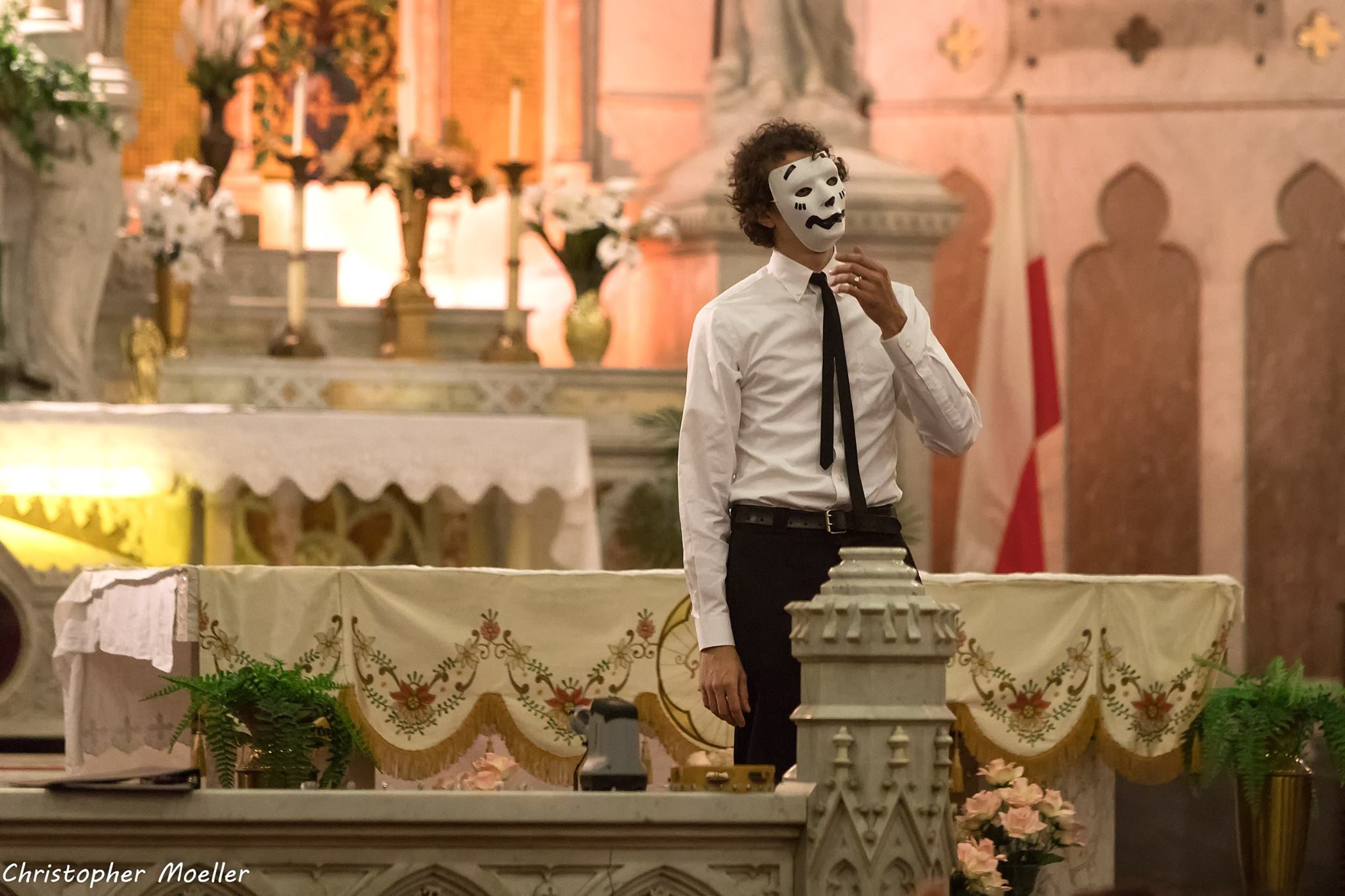Detroit Free Press
For 30 years, painted-face performance artist Satori Circus has evolved his act at a steady clip, always ready to embrace something new, something weird, something more whimsical. Music and vocalization are central to his performances, but he also draws from the theatrical traditions of vaudeville and burlesque.
The artist behind the costumes and makeup is Russell Taylor, an alum of the graduate program at the University of Michigan School of Art & Design who has played a variety of stages and venues over the years. He got his start in the early 1980s in the local rock and punk scene, particularly with a band called Fugitive Poetry, but a few years later found himself being drawn toward the no-boundaries discipline of performance art.
He began fusing the absurdist styles of Dada art with openly silly, body-contorting slapstick, but what has always set Satori Circus apart on the local underground arts scene is his use of music. His high-pitched singing voice is disarmingly tender and sometimes sounds angelic in its vulnerability.
Read more:
Kresge Artist Fellows: Newest class of $25k winners revealed
Photos: Mass Mob to visit St. Albertus in Detroit
On Saturday, Taylor has a new adventure in store for Satori Circus: He’ll be performing inside Detroit’s ornate and historic St. Albertus Church. Drawing on 30 years of musical happenings with Satori Circus, Taylor has arranged a career-spanning collection of songs to be interpreted a cappella by him and a choir of friends and artistic allies. He spoke with the Free Press in advance of the performance.
QUESTION: Satori Circus is many things at once, but what are your main origins and motivations?
ANSWER: It’s just basically pure energy. (The act) has gotten better as it has evolved. It used to be very low-tech because it always stemmed around budget, but I still thrive on it. But I had no idea what I was getting into with (Satori Circus). I started out in rock bands, Top 40 cover bands, then got into punk bands. One harebrained day, I decided that I was bored playing in front of people in that band manner and wanted to try something different, something more performative, more arty-farty, something that David Bowie might do. So it became something more stylized and glamorous and theatrical.
We recorded our music and would sing live to a playback while we interacted with all these props and costumes, which were very surreal. (The act) incorporated a lot of visual elements and character sketches, but it was always driven by the music! I’ve always been deeply moved by music, lyrics and spoken word performances.
Q: What inspired the makeup?
A: Well, it had nothing to do with clowns or mimes, actually. It started out as a way just to be anonymous. I wanted to create a kind of character like Bowie had. I wanted this Satori Circus thing to be its own thing, its own person, its own machine. That way, Russ could be whatever Russ wanted to be outside of the makeup. It started out as white foundation (powder), but, like anything else I do, it grew and morphed. I’d started working with children as an art teacher for a while in the ’90s, and what I was starting to do with my face, with the eyebrows, nose and mouth, were very much like stick-figure drawings. It really hit me while I was teaching art to kids that that’s where the markings come from.
Q: You’ve developed a variety of performance pieces, plays, sketches. What sets this choir performance apart from the rest?
A: I came up with the idea of taking some of my older pieces and mixing them with newer stuff and doing it all a cappella. I wanted to work with people who don’t necessarily sing, more like having my artist friends hooting and hollering to Satori Circus material. Most of my choir performers are in the arts scene here, and I think only two or three of out of the 10 typically sing in their own productions. The rest are from other disciplines like burlesque dancing, like Lushes LaMoan and Kitty Paige. They do sing, but they haven’t really gotten to explore that within their own stuff, yet, and it has to be noted that they really can do all that stuff. I really wanted something that was like organized chaos, and so far it’s working out.
Q: What has it been like to adapt Satori Circus to a church setting?
A: First off, just the natural acoustic dynamics of (St. Albertus)’ architecture required me to strip everything down and slow down my tempos. We’ve really been working on coordination of the voices. I don’t think it mattered to me which songs of mine I wound up selecting, even though some were very much punk! There’s a nonsecular energy to some of the songs that I never thought of until a couple weeks ago when I heard them rehearsed or through the spoken-word pieces.
Most of all, I wanted everyone in the choir to interpret each spoken-word piece in their own way, just with the consideration that they speak very clearly and slowly, so that each word can travel throughout the church. Same thing with the songs. They’re interested in doing the right job for my work, but I’m interested in letting them be them! Matt Baka (president of Polish American Historic Site Association) was a huge help in setting this up, and I hope this show can help St. Albertus Church open doors for more performances like this.
Q: How do you think the experience of working with this choir at St. Albertus will influence you in the years ahead?
A: Getting ready for this show has taught me so much about voice control. With a venue that’s as huge as this church is … it’s six stories high, or more! And just to hear voices echoing up there, it’s just bliss. With the choir, it did feel a little bit like being a director, even though that’s not anything I’ve ever done. I mean, I can’t read music, actually. I don’t even know whether I’m a tenor. I’ve just never thought about any of that. I’ve always just gone about my work!
For me, anything can inspire me. And (getting ready for St. Albertus) has definitely given me some ideas for stuff coming up or stuff I’ll be doing in the new year. But that’s still in the back of my head. For those participating in the choir, I think it has inspired them to take more big jumps and given them some new ideas for their own work. I’ve certainly never been afraid to take on something new and see what it tastes like. All I know is, I just keep on moving and grooving. I still find roadblocks and hurdles, but I also still find open windows!
‘Satori Circus: The Choir’






